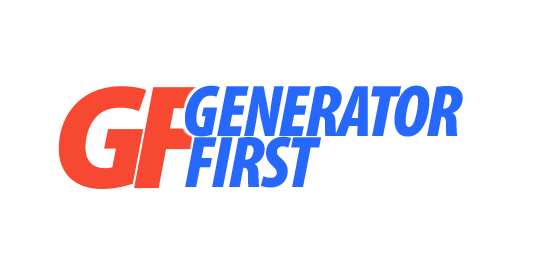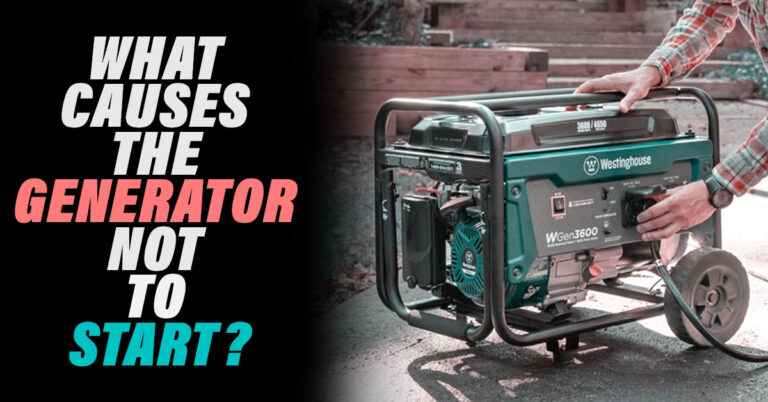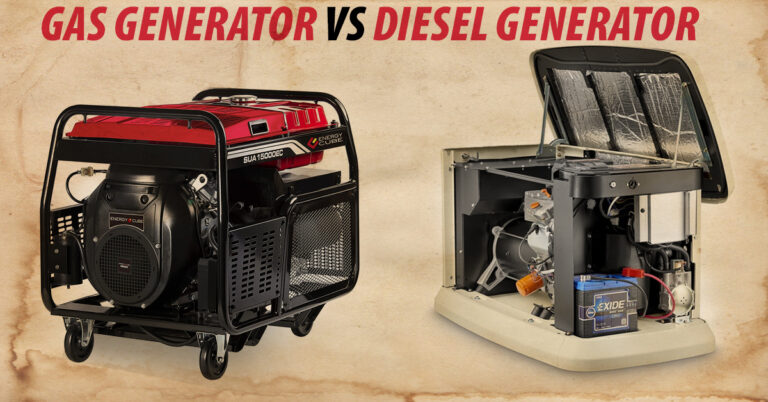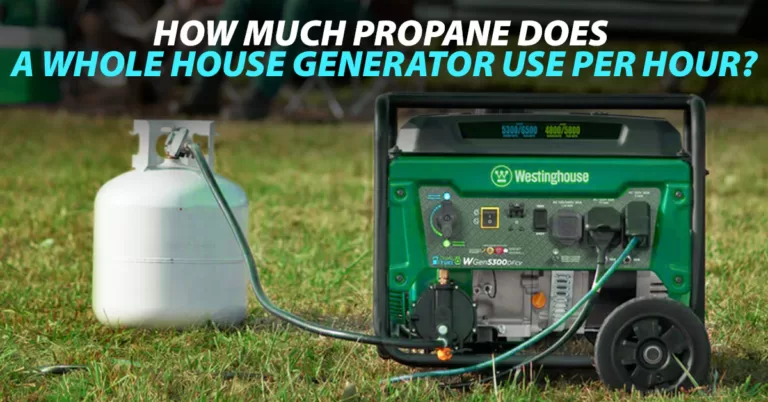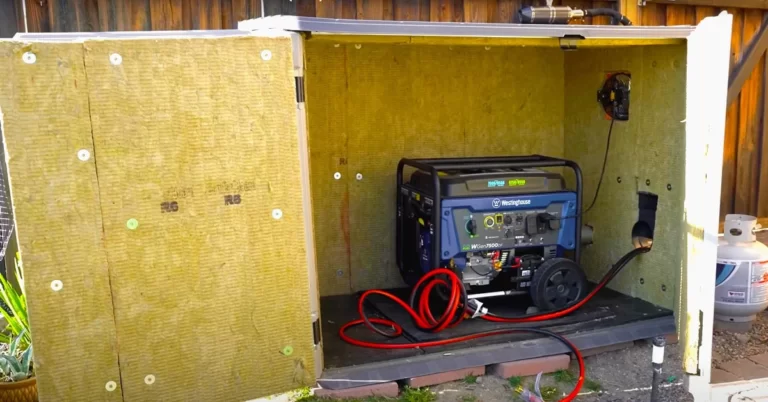What Is Inverter Generator & How Does It Work?
There are various generator kinds, each with advantages and disadvantages. Particularly, inverter generators are growing in popularity due to their capacity to generate reliable, clean, and safe electricity for delicate devices.
In this article, we’ll go into great detail about inverter generators, including how they operate, their benefits and drawbacks, and how they stack up against other generators. We’ll also offer advice on how to choose the best inverter generator for your requirements, as well as safety and maintenance advice to keep your generator in good working order.
What Is Inverter Generator?
It’s crucial to initially comprehend the fundamentals of an alternator to understand how inverter generators function. The main distinction between alternators and generators is that the rotor is energized by a DC motor, creating a powerful magnetic field in an alternator. As the rotor turns, the stators interrupt these magnetic fields, generating power collected through the stator.
On the other hand, in a generator, an excitation winding used by the stator to generate a magnetic field causes the armature winding to rotate. Due to this fundamental distinction, inverter generators are distinct from the other two types of power sources.
Inverter generators use advanced electronic circuitry to convert engine-generated AC power into DC electricity, which is then inverted back into pure, reliable AC power. The generator could produce power with minimal total harmonic distortion (THD). With the constant power output, delicate electronics like laptops and smartphones can be operated without risk.
Inverter generators generate clean energy and are significantly quieter than traditional generators. It allows the engine of an inverter generator to change its speed in response to the load and avoid running continuously at maximum capacity. As a result, inverter generators are substantially more fuel-efficient because they only consume the fuel necessary to generate the required amount of power.
How Inverter Generator Works?
Due to their ability to produce clean, reliable AC power without soundproof enclosures, inverter generators have grown in popularity in recent years. They are also renowned for using less fuel and quieter than standard generators. How do inverter generators operate, though? Let’s look more closely.
Items That Make Up An Inverter Generator
An inverter generator includes a battery, alternator, and inverter in addition to the fuel tank as a source of electricity. The engine generates high-frequency AC electricity, which the alternator converts into DC power. These DC currents are then converted back into AC currents by the inverter.
Dependable And Pure Electricity
Inverter generators generate 120 volts at 60 Hz, like traditional portable generators. However, the additional processes utilized in power generation result in a much more constant current with an inverter generator.
Since there are fewer harmonic disturbances, inverter generators are said to provide “clean electricity”. The power generated by the inverter generator is of a caliber comparable to that from your main electricity supplier.
The Principles Behind Clean Electricity
Clean power is practical for two reasons. The initial AC of the inverter generator has a higher frequency, which gives it greater electrical power. Because of its improved control over the AC frequency provided by its mechanical architecture, an inverter generator may create a very steady sine wave. Because they give users more control over power output, inverter generators are highly energy-efficient.
Voltage Variability And Quiet Operation
A generator with an inverter can maintain 3600 RPM while changing its voltage for the load. Because of their continuous current, inverter generators are far quieter than traditional portable generators.
What Functions Does An Inverter Have?
Direct current (DC) is converted into alternating current (AC) via an inverter’s electrical component. DC power sources, such as batteries, may be used to power AC appliances and equipment through this process. There are several applications for inverters, including solar energy systems and automobiles. However, how do they work?
The Process Of Conversion
An inverter uses a series of switches to convert DC power to AC power during conversion. These switches change the current’s direction to produce a sine wave, the typical AC power waveform. The sine wave’s frequency and amplitude may be adjusted to suit the application’s needs.
Filtering
An inverter’s output is not always a pure sine wave and may contain undesirable harmonic distortion. To improve the waveform, filters smooth the signal and remove unnecessary noise. An inverter’s filters can change depending on the application and the needed output quality.
Various Inverter Types
A square wave, a modified sine wave, and a pure sine wave are among the various types of inverters. The most fundamental kind of inverter is the square wave. They are frequently employed when a lower-quality output is acceptable, like powering simple tools or appliances. Sensitive electronics can benefit from the improved performance and cleaner output of modified sine wave inverters over square wave inverters.
The output from pure sine wave inverters is of the finest quality and is comparable to that of the primary electricity provider. They are employed for tasks that demand dependable, high-quality output, such as running delicate electronics or powering medical equipment.
Applications
There are many different applications for inverters. Inverters provide AC power to gadgets and appliances like cell phones and mini TVs in automobiles; large inverters power tools and equipment on construction sites. Inverters are used in solar and wind power systems to transform DC power from the panels or turbines into AC power that can be used in residences or commercial buildings.
Generator Vs. Inverter
It’s crucial to understand the distinction between inverters and generators. Only DC to AC conversion is possible with inverters, which need a battery or solar panel power supply. They are powerless to generate it. On the other hand, generators create AC power by transforming mechanical energy into electrical energy. In situations where electricity is not easily accessible or is needed as a backup power source, generators are frequently used.
How Is A Generator Put To Use?
The generator function is based on the electromagnetic induction hypothesis. The basis of a generator is a magnet, a conductor, and a mechanical energy source. The generator comprises a revolving component known as the rotor and a stationary coil of wire known as the stator.
As the rotor rotates, a magnetic field is created around the stator thanks to the magnet on the rotor. In the wire coil, this magnetic field creates a voltage that generates an electrical current. The voltage generated increases with the speed of the rotor.
Generators can be classified based on their power output and fuel. Small generators typically run on petrol or diesel fuel, generating up to 10 kilowatts of power. Large generators can generate up to several hundred megawatts of electricity and are powered by nuclear, coal, or natural gas.
The portability of generators can also be used to categorize them. Small, lightweight, portable generators are easy to move from one location to another. They frequently serve as backup power sources for households during power outages or on construction sites.
However, stationary generators are more powerful and significant. In a power outage, they typically provide backup power to hospitals, data centers, and other crucial institutions.
Generators adjust the output voltage and frequency using various components in addition to electromagnetic induction. Voltage regulators and frequency converters are some of these parts.
To match the demands of the load, voltage regulators modify the generator’s output voltage. On the other side, frequency converters modify the output power’s frequency to conform to the power grid’s frequency.
Which Is Better, A Generator Or An Inverter?
Power backup options for homes, businesses, and outdoor activities include generators and inverters. Both have advantages and disadvantages, but they operate differently and serve the same objective of delivering power during a power outage.
Principle
A diesel-powered generator generates electricity by using rotating machinery to transform the calorific value of the fuel into electrical energy. When turned on, it creates power rather than storing it. In contrast, an inverter uses batteries to store DC electricity before converting it to AC to power appliances. It can swiftly transition between DC and AC without requiring a manual start.
Energy
A generator is a device that generates power and requires fuel. On the other hand, an inverter is a device that stores and converts energy. When DC power is converted back into AC energy, an inductive electrical signal is created with all the same characteristics as a full alternating current.
Weight
generators are large and need a moving metal frame and wheels to be stable. They are difficult to move and not portable. Inverters, on the other hand, are small and light. However, they require attached batteries, which can be cumbersome and difficult to transport.
Storage
There are delays between starting a generator and receiving backup power when utility supplies fail since generators do not store electricity and must be started before they can provide power. An inverter has no set times or manual starts because it stores electricity in batteries.
Efficiency
Because they use more fuel to produce power, generators are less efficient than inverters and have greater operational costs and emissions. Inverters, on the other hand, are more effective and use less fuel, which reduces emissions and operating expenses.
Noise
Generators generally produce noise levels up to 90 dB higher than inverters. In contrast, inverters are quieter, ranging from 50 to 60 dB noise levels.
Differences Between Conventional And Inverter Generators
There are two basic categories of generators: traditional generators and inverter generators. Despite their initial similarities, they have some important distinctions.
Constructive And Portable
In general, inverter generators are smaller and lighter than regular generators. Even more portable than open-frame inverter generators, are they? They are a great option for calm situations because their insulation absorbs noise. However, although they weigh slightly more, open-frame inverter generators generate more power than their closed-frame counterparts.
A Higher Cost
Inverter generators typically cost more than normal generators with outputs of similar power. Even the most affordable inverter generator will be cheaper than most high-end standard generators. Still, the equipment’s quality and specifications should always be considered.
Noise Levels
Inverter generators, particularly closed-frame models, run more quietly than traditional ones. An inverter generator is the best option if quiet operation is important.
Efficiency Of Fuel
Because they can change the speed of their motors, inverter generators use less fuel than conventional generators. Because they produce fewer emissions, they are furthermore more ecologically friendly.
Operation In Parallel
To compensate for their lack of power, many versions of inverter generators can operate in parallel with other generators. Inverter generators have this feature more frequently than normal units do.
Extended Runtime
Due to their capacity to automatically reduce power as needed, inverter generators often have longer operating periods than regular generators.
Picking An Inverter Generator
In the following circumstances, an inverter generator might be the best option:
Camping Or RVing:
Because it is portable, light, and delivers clean, quiet power, an inverter generator is perfect for outdoor activities. Because of this, you won’t need to lug a large generator around and can listen to the peaceful sounds of nature without bothering your neighbors.
Inverter generators are also ideal for tailgating or outdoor gatherings where power is required for a few hours. They provide renewable energy and are quiet. You may power your speakers, grill, and other equipment without disturbing the neighbors.
Backup Power For Home
An inverter generator can offer backup power for your home if you reside in an area that experiences frequent power outages. The refrigerator, lighting, and other vital appliances can be kept running until the power is restored, even though they might not be able to power the entire house.
Construction Or Job Sites:
Inverter generators are excellent for use on construction or job sites where you need equipment, such as power tools. They can power anything from drills to saws and are portable.
Remote Areas:
An inverter generator can give you dependable electricity if you’re working or living in a remote area without access to the grid. They can operate for many hours on a single gasoline tank and are lightweight and tiny, making them simple to move.
Benefits And Drawbacks Of Inverter Generators
As a dependable source of electricity, inverter generators are gaining popularity among homeowners and outdoor enthusiasts. Weighing the benefits and drawbacks of inverter generators is essential before purchasing.
Inverter Generator Benefits
Fuel Efficiency:
Because inverter generators only consume the energy necessary to power your devices, they are more fuel-efficient than traditional generators. Long-term fuel savings are therefore possible.
Cleaner Power:
Inverter generators generate clean electricity suitable for delicate gadgets like laptops and cell phones. Additionally, they are more environmentally beneficial than conventional generators because they emit fewer emissions.
Low Noise:
Inverter generators are substantially quieter than conventional ones, with some models producing noise levels as low as 50 decibels. They are, therefore, perfect for use in homes or campgrounds.
Easy Maintenance:
Comparatively speaking, inverter generators need less maintenance than standard generators. They have fewer moving components and need fewer oil changes.
Light And Portable:
Inverter generators are designed to be light and portable, making them easy to transport and store.
Inverter Generators Drawbacks
Cost:
Inverter generators are frequently more expensive than conventional generators, which may discourage some potential customers.
Lower Power Output:
Traditional generators produce less power than inverter generators, so they might not be suited for powering heavy tools or appliances.
Limited Fuel Capacity:
Inverter generators have smaller fuel tanks than conventional ones; therefore, they might only operate briefly before refueling.
FAQs
-
An inverter generator is what?
A generator called an inverter generates stable, high-quality power and is safe for use with delicate devices. Inverter generators utilize advanced electronic circuitry to transform DC power into AC power, subsequently used for electrical devices.
-
Can inverter generators power huge appliances?
It is based on the inverter generator’s size and power output. Although certain types may support heavier loads, inverter generators are generally better suited for powering small to medium-sized devices and appliances.
-
How should my inverter generator be maintained?
Regular oil changes, replacing or cleaning the air filter, and keeping the fuel system clean are all necessary maintenance procedures for an inverter generator. It’s crucial to adhere to the manufacturer’s suggested maintenance schedule and keep the generator cool and dry when unused.
-
Do inverter generators cost more than standard generators?
Because of their superior technology and features, inverter generators are typically more expensive than conventional generators. An inverter generator’s price can, however, change depending on the model and power output.
